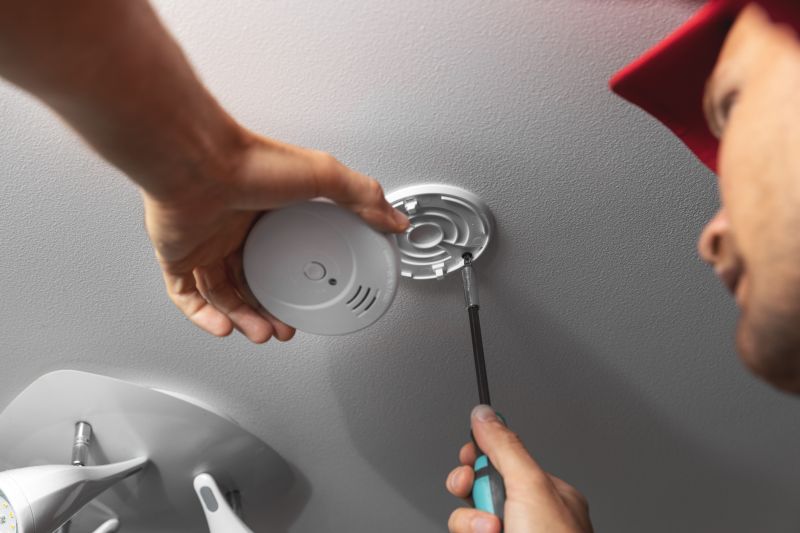Expert Picks For Smoke Detector Devices To Protect Your Home
Find out which smoke detector products are favored by safety experts for their effectiveness and ease of use.
 Smoke detectors are essential safety devices designed to alert inhabitants to the presence of smoke, potentially indicating fire or other hazards. They come in various forms and functionalities, each tailored to different needs and environments. Traditional ionization smoke alarms are sensitive to fast-flaming fires, while photoelectric models excel at detecting smoldering fires. Many modern smoke detectors incorporate additional features such as interconnected alarms, voice alerts, and smart connectivity, enhancing overall safety and convenience. Proper selection and installation of these devices can significantly improve early warning capabilities, providing valuable time for evacuation and emergency response. When choosing smoke detectors, it is important to consider the specific requirements of your home or property, including size, layout, and existing safety systems.
Smoke detectors are essential safety devices designed to alert inhabitants to the presence of smoke, potentially indicating fire or other hazards. They come in various forms and functionalities, each tailored to different needs and environments. Traditional ionization smoke alarms are sensitive to fast-flaming fires, while photoelectric models excel at detecting smoldering fires. Many modern smoke detectors incorporate additional features such as interconnected alarms, voice alerts, and smart connectivity, enhancing overall safety and convenience. Proper selection and installation of these devices can significantly improve early warning capabilities, providing valuable time for evacuation and emergency response. When choosing smoke detectors, it is important to consider the specific requirements of your home or property, including size, layout, and existing safety systems.
Top Overall Option
Multi-Function Smoke Detector
A versatile smoke detector that combines multiple detection technologies with smart features, offering reliable alerts and easy integration into existing safety systems. Its long-lasting battery life and user-friendly interface make it a practical choice for various environments, providing peace of mind through consistent performance and advanced alert options.
Types of Products For Smoke Detectors
Ionization Smoke Alarms
Detect fast-flaming fires by sensing the particles produced during combustion, suitable for general household use.
Photoelectric Smoke Alarms
Ideal for detecting smoldering fires with slow smoke production, often recommended for bedrooms and living areas.
Combination Smoke and Carbon Monoxide Detectors
Provide dual protection by sensing both smoke and carbon monoxide, offering comprehensive safety in one device.
Smart Smoke Detectors
Connect to Wi-Fi and smartphone apps for remote monitoring, alerts, and integration with smart home systems.
Interconnected Smoke Alarms
Linked alarms that activate simultaneously when one detects smoke, ensuring comprehensive coverage across larger spaces.
Wireless Smoke Detectors
Operate without wiring, making installation easier in retrofit scenarios or rental properties.
Hardwired Smoke Detectors
Connected directly to the building's electrical system, often with battery backup for continuous operation.
Voice Alert Smoke Alarms
Provide spoken alerts to specify the type of hazard or location, aiding in quick response.
Battery-Powered Smoke Alarms
Operate solely on batteries, ideal for locations without wiring or during power outages.
Photoelectric and Ionization Combo Alarms
Combine detection methods for broader fire detection coverage, suited for varied fire scenarios.
Commercial Smoke Detectors
Designed for larger or specialized spaces with advanced features and higher sensitivity options.
Popular Choices
Highly favored for flexible installation and seamless integration into smart home setups.
Popular for their connectivity and remote alert capabilities, allowing monitoring via smartphone.
Chosen for their ability to activate all alarms simultaneously, providing comprehensive coverage.
Commonly used for their sensitivity to slow, smoldering fires, especially in bedrooms.
Often selected for quick detection of flaming fires, suitable for general use.
Popular for providing dual safety features in a single device, reducing the number of alarms needed.
Favored for their ease of installation and reliable operation during power outages.
Preferred for their clear, spoken warnings that specify hazards or locations.
Ensured for their consistent power supply and integration with home wiring systems.
Key Buying Considerations
- Detection technology type: ionization, photoelectric, or combination based on fire risk environment.
- Power source: battery-operated, hardwired, or smart connectivity options.
- Interconnectivity: whether alarms should be linked for simultaneous alerts across multiple units.
- Additional features: voice alerts, smart notifications, or integrated carbon monoxide detection.
- Ease of installation: wireless options may simplify setup, while wired units require professional installation.
- Battery life and maintenance: long-lasting batteries or easy replacement options.
- Coverage area: ensure the detector's sensitivity and range suit the intended space.
- Compatibility with existing safety systems: integration with smart home or security networks.
- Certifications and standards: look for UL listing or other recognized safety certifications.
- Environmental suitability: choose models appropriate for specific areas like kitchens or garages to reduce false alarms.
- User interface: clear indicators, easy testing, and reset functions for regular maintenance.
- Price and warranty: consider cost-effectiveness and manufacturer support.
- Design and size: unobtrusive models that blend with home decor.
- Response time: devices with quick alert capabilities can provide early warnings.
- Additional sensors: some models include temperature or humidity sensors for comprehensive monitoring.
This page contains affiliate links. We may earn a commission if you purchase through these links, which helps support our content creation. We only recommend products that meet our standards for safety and reliability.
